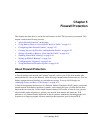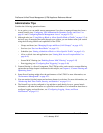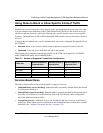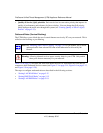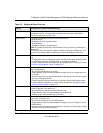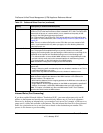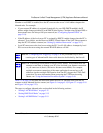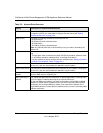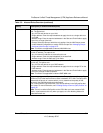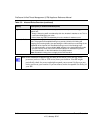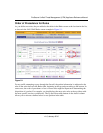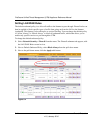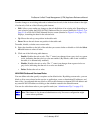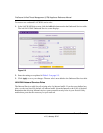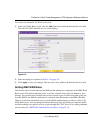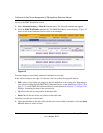
ProSecure Unified Threat Management (UTM) Appliance Reference Manual
Firewall Protection 5-9
v1.0, January 2010
LAN Users The settings that determine which computers on your network are affected by this
rule. The options are:
• Any. All PCs and devices on your LAN.
• Single address. Enter the required address to apply the rule to a single device on
your LAN.
• Address range. Enter the required addresses in the Start and Finish fields to apply
the rule to a range of devices.
• Groups. Select the Group to which the rule applies. Use the LAN Groups screen
(under Network Configuration) to assign PCs to Groups. See “Managing Groups
and Hosts (LAN Groups)” on page 4-12.
Note: This field is not applicable to inbound LAN WAN rules.
WAN Users The settings that determine which Internet locations are covered by the rule, based
on their IP address. The options are:
• Any. All Internet IP address are covered by this rule.
• Single address. Enter the required address in the start field.
• Address range. Enter the Start and Finish fields.
DMZ Users The settings that determine which DMZ computers on the DMZ network are affected
by this rule. The options are:
• Any. All PCs and devices on your DMZ network.
• Single address. Enter the required address to apply the rule to a single PC on the
DMZ network.
• Address range. Enter the required addresses in the Start and Finish fields to apply
the rule to a range of DMZ computers.
Note: This field is not applicable to inbound DMZ WAN rules.
QoS Profile The priority assigned to IP packets of this service. The priorities are defined by “Type
of Service (ToS) in the Internet Protocol Suite” standards, RFC 1349. The QoS profile
determines the priority of a service which, in turn, determines the quality of that
service for the traffic passing through the firewall.
The UTM marks the Type Of Service (ToS) field as defined in the QoS profiles that
you create. For more information, see “Creating Quality of Service (QoS) Profiles” on
page 5-35.
Note: There is no default QoS profile on the UTM. After you have created a QoS
profile, it can become active only when you apply it to a non-blocking inbound or
outbound firewall rule.
Table 5-3. Inbound Rules Overview (continued)
Setting Description (or Subfield and Description)



